Featured Image: NASA
Lift Off Time | June 05, 2023 – 15:47 UTC | 11:47 EDT |
|---|---|
Mission Name | Dragon CRS-2 SpX-28, a Commercial Resupply Service mission to the International Space Station (ISS) |
Launch Provider | SpaceX |
Customer | National Aeronautics and Space Administration (NASA) |
Rocket | Falcon 9 Block 5 Booster 1077-5; 67.7-day turnaround |
Launch Location | Launch Complex 39A (LC-39A), Kennedy Space Center, Florida, USA |
Payload mass | Not Specified |
Where is the spacecraft going? | Dragon 2 C208-4 will rendezvous with the ISS, ~400 km low Earth orbit (LEO) at a 51.66° inclination |
Will they be attempting to recover the first stage? | Yes |
Where will the first stage land? | Autonomous Spaceport Drone Ship A Shortfall of Gravitas |
Will they be attempting to recover the fairings? | There are no fairings on the Dragon 2 |
Are these fairings new? | There are no fairings on the Dragon 2 |
How’s the weather looking? | The weather is currently 60% GO for launch (as of June 04, 2023 – 15:00 UTC) |
This will be the: | – 230th Falcon 9 launch – 165th Falcon 9 flight with a flight-proven booster – 170th re-flight of a booster – 37th re-flight of a booster in 2023 – 198th booster landing – 124th consecutive landing (a record) – 39th launch for SpaceX in 2023 – 66th SpaceX launch from LC-39A – 4th flight of Dragon 2 C208 – 85th orbital launch attempt of 2023 |
Where to watch | Official livestream |
What Does All This Mean?
Dragon CRS-2 SpX-28 (CRS-28) is a Commercial Resupply Service mission that will be heading to the International Space Station (ISS) to deliver cargo. SpaceX was awarded this mission by NASA back in 2016 and will launch it on its Falcon 9 Block 5 rocket using a Cargo Dragon 2 – C208-4. The rocket will lift off from Launch Complex 39A, at the Kennedy Space Center in Florida. CRS-28 will be the eighth flight for SpaceX under NASA’s CRS Phase 2 contract.
CRS-2 SpX-28 – CRS-28
The International Space Station (ISS) is a large international collaboration between nations across the globe. Operating for over 20 years, the orbital laboratory needs regular visits from cargo vehicles to deliver new experiments, supplies like clothing, food, and water, and eventually acts as a garbage disposal for used items.
Currently, three different vehicles from three different entities have the capability to carry cargo to the ISS. Northrup Grumman’s Cygnus spacecraft launched by NASA, ROSCOSMOS’s Soyuz Progress spacecraft, and SpaceX’s Cargo Dragon spacecraft.
Cygnus recently launched a resupply mission to the ISS with the S.S. Sally Ride vehicle on their CRS-2 NG-18 mission from Wallops Island, Virginia, USA. The last Progress launch was in May of 2023 on the Progress MS-23 mission. The last SpaceX resupply mission was in March of 2023, CRS-2 SpX-27.
CRS-28 Research Payloads
Every resupply mission hosts dozens of experiments and technology demonstrations. On CRS-28, these range from vegetation experiments to new solar arrays for the ISS to provide greater power consumption. These research experiments can range from NASA-funded experiments to private companies and universities. Due to the amount of research on CRS-28, only select payloads will be discussed in-depth here. If you’d like to learn more, check out and explore NASA’s or the National Lab’s websites.
iROSA (International Space Station Roll-Out Solar Arrays)
Two more rollable solar arrays will be launched to the International Space Station on CRS-28. These solar arrays will provide over 20 kW of power each, which will result in a 30% increase in power production for the ISS. The pair of arrays will be installed by crew members of Expedition 69 over the course of multiple planned EVAs.
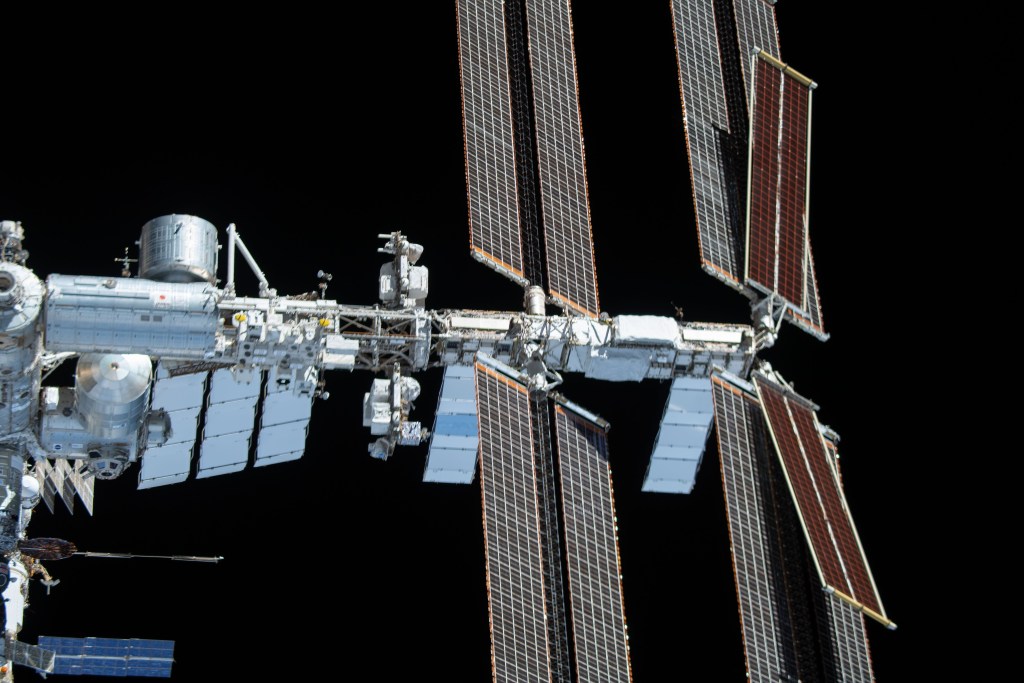
Each array has been built from a composite carbon fiber which allows it to be rigid when deployed, but curl-up like a tape measure when stowed. The rolling and lightweight components of the ROSAs enable them to be launched with more equipment than heavier, non-rolling solar arrays.
These two solar arrays follow four other solar arrays that were previously launched on CRS-22 and CRS-26. All four previously launched solar arrays have already been installed and been in service ever since.
CubeSats on CRS-28
CRS-28 will carry a total of six CubeSats. Five of them are Nanorack sponsored CubeSats from Canadian Universities, while the 6th and final CubeSat will be a US satellite called Moonlighter by The Aerospace Corporation. Moonlighter will be the world’s first and only hacking sandbox in space and can described as a cyber security test bed to identify methods for preventing the hacking of satellite systems in space.
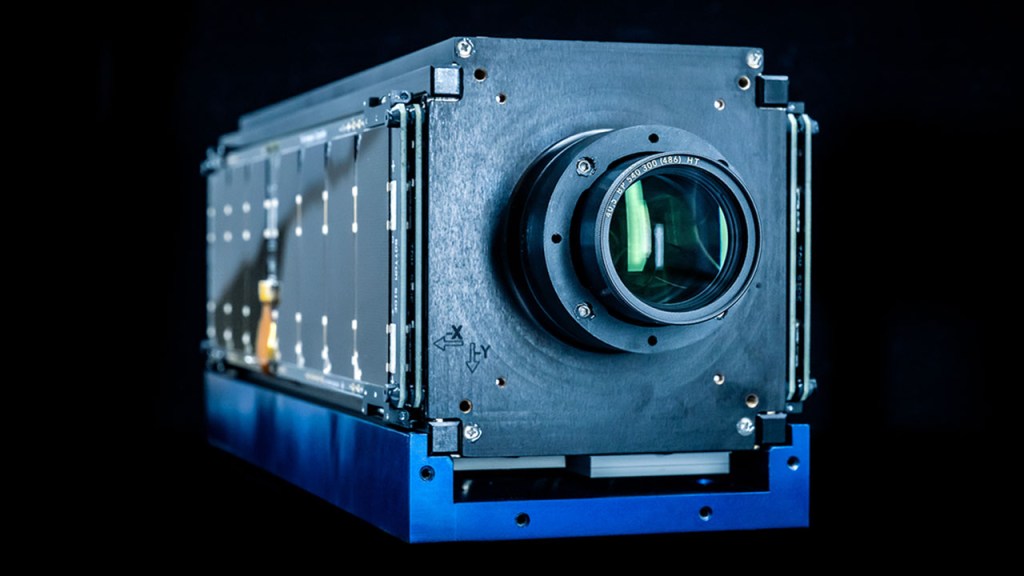
| CubeSat | Country | Organization | Description |
|---|---|---|---|
| Moonlighter | USA | The Aerospace Corporation | 3U hacking sandbox |
| Ukpik-1 | Canada | Western University, Ontario | Teaching tool for students to gain experience |
| SC-ODIN | Canada | Concordia University, Quebec | 3U Orbital Dust Imaging Nanosat |
| Iris | Canada | University of Manitoba | Studying space weathering of asteroids and the Moon |
| RADSAT-SK | Canada | University of Saskatchewan | Radiation dosimeter sensing, plus Earth-imaging camera |
| ESSENCE | Canada | York University, Ontario | Testing a wide-angle camera for observing snow and ice |
CLINGERS
Flight Tech Demo of Docking/Undocking Cubesats Inside ISS, also known as CLINGERS (please don’t ask us how they arrived at this name from the full title) is a technology demonstrator for rendezvous and docking procedures, also known as Rendezvous Proximity Operations (RPO – an abbreviation we can understand).
According to NASA, there is no consensus between satellite operators on a standard method of making docking connections. This demonstrator aims to test a low-mass and low-cost interface system for CubeSats. CLINGERS will investigate the flight dynamics of both nominal and off-nominal modes of contact using a full 6 degrees of freedom model (3 translation axes, 3 rotation axes).
In principle, any platform that has a CLINGERS device attached could use its own sensor data to achieve autonomous docking with any other CLINGERS device – even if the second device cannot navigate on its own.
Genes in Space-10
Pristine Onuoha, student at East Chapel Hill High School in Chapel Hill, NC, won the national competition that determined what experiment will be send to the ISS on this Genes in Space mission. Genes in Space-10 will aim to gather more data and better our understanding on the mechanism of telomere lengthening.
Telomeres are molecular structures at the end of our chromosomes that get shorter and shorter over time and as humans age. Genes in Space-10 will specifically test a mechanism of measuring the length of aforementioned telomeres. Research has shown that telomeres might lengthen in micro gravity. The experiment aims to explore the cause for this telomere lengthening and if it might be caused by proliferating stem cells. This could improve our understanding of aging and the effects of long-term space travel/missions on the human body.
Plant Habitat-03
Researchers are asking themselves if epigenetic changes in plants grown in microgravity can pass on those changes in the plant’s genetic code. Epigenetic changes are usually caused by environmental stresses including space flight. Those DNA changes are often added DNA sequences rather than changes in already existing DNA. Researchers Anna-Lisa Paul and Robert Ferl from the University of Florida are exploring if aforementioned epigenetic changes are being continued or if they stabilize in future generations of plants.

Seeds from Arabidopsis thaliana plants, thale cress, that were previously grown in the ISS’ Plant Habitat have been recovered from space and have been analyzed back on Earth. They are being sent back up on the CRS-28 mission to be re-grown in the same Plant Habitat as their parent plants to see how epigenetic changes change in plants grown in microgravity. The experiment’s results could improve our understanding of how to grow multiple generations of plants to provide food during long duration space missions.
What Is Falcon 9 Block 5?
The Falcon 9 Block 5 is SpaceX’s partially reusable two-stage medium-lift launch vehicle. The vehicle consists of a reusable first stage, an expendable second stage, and, when in payload configuration, a pair of reusable fairing halves.
First Stage
The Falcon 9 first stage contains nine Merlin 1D+ sea-level engines. Each engine uses an open gas generator cycle and runs on RP-1 and liquid oxygen (LOx). Each engine produces 845 kN of thrust at sea level, with a specific impulse (ISP) of 285 seconds, and 934 kN in a vacuum with an ISP of 313 seconds. Due to the powerful nature of the engine, and the large amount of them, the Falcon 9 first stage is able to lose an engine right off the pad, or up to two later in flight, and be able to successfully place the payload into orbit.
The Merlin engines are ignited by triethylaluminum and triethylborane (TEA-TEB), which instantaneously burst into flames when mixed in the presence of oxygen. During static fire and launch the TEA-TEB is provided by the ground service equipment. However, as the Falcon 9 first stage is able to propulsively land, three of the Merlin engines (E1, E5, and E9) contain TEA-TEB canisters to relight for the boost back, reentry, and landing burns.
Second Stage
The Falcon 9 second stage is the only expendable part of the Falcon 9. It contains a singular MVacD engine that produces 992 kN of thrust and an ISP of 348 seconds. The second stage is capable of doing several burns, allowing the Falcon 9 to put payloads in several different orbits.
For missions with many burns and/or long coasts between burns, the second stage is able to be equipped with a mission extension package. When the second stage has this package it has a grey strip, which helps keep the RP-1 warm, an increased number of composite-overwrapped pressure vessels (COPVs) for pressurization control, and additional TEA-TEB.
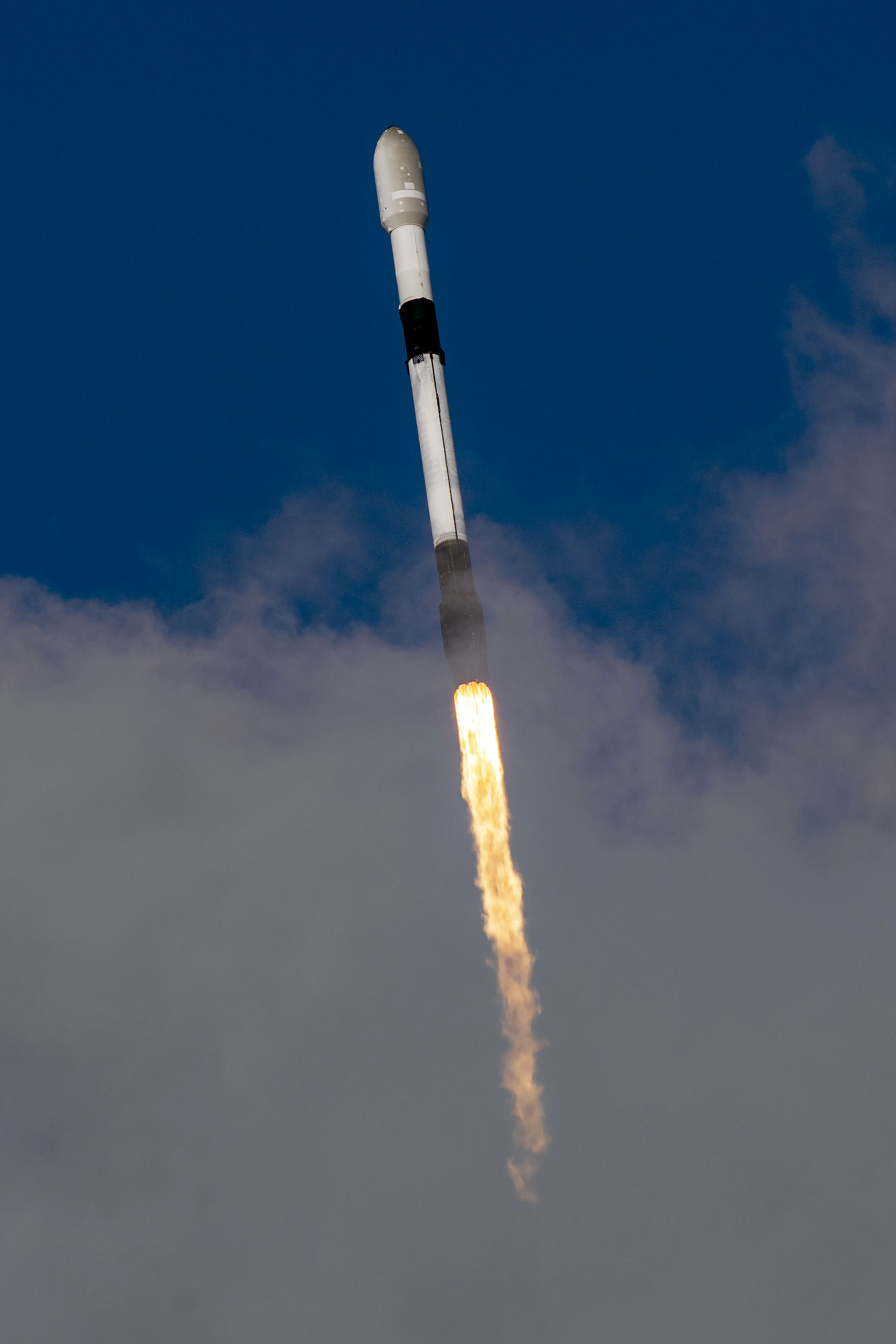
Falcon 9 Booster
The booster supporting the CRS-28 mission is B1077-5. As the name implies, the booster has supported four previous missions.
| B1077’s missions | Launch Date (UTC) | Turnaround Time (Days) |
| Crew-5 | May 10, 2022 – 16:00 | N/A |
| GPS III SV06 | January 18, 2023 – 12:24 | 104.85 |
| Inmersat I-6 | February 18, 2023 – 03:59 | 30.65 |
| Starlink Group 5-10 | March 29, 2023 – 20:01 | 39.67 |
| Dragon CRS-2 SpX-28 | June 04, 2023 – 16:12 | 67.7 |
Following launch, the Falcon 9 booster will conduct up to three burns. These burns aim to softly touch down the booster on the Autonomous Spaceport Drone Ship (ASDS) A Shortfall of Gravitas .
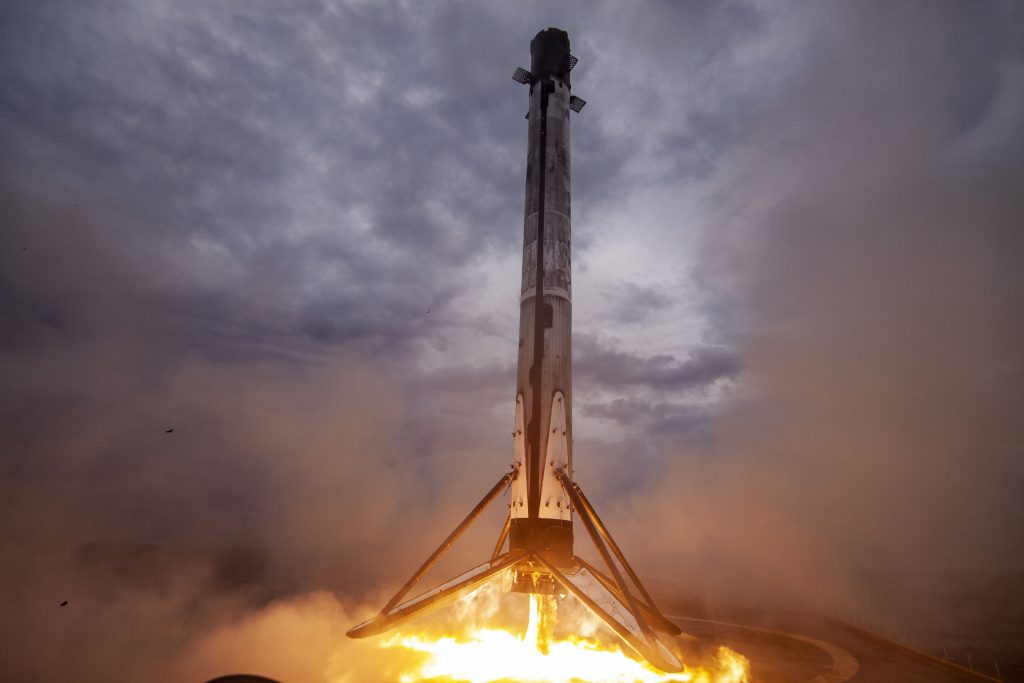
Cargo Dragon 2
The CRS-28 mission will be the eighth mission to the ISS for a Cargo Dragon 2 and the fourth mission for Dragon C208-4. Like its fellow Dragons it will hopefully return to Earth after serving its time on the ISS bringing back experiments and other cargo. It will then be refurbished and used on another mission in the future.
| C208’s missions | Launch Date (UTC) | Turnaround Time (Days) |
|---|---|---|
| Dragon CRS-2 SpX-21 | December 06, 2020 | N/A |
| Dragon CRS-2 SpX-23 | August 29, 2021 | 266 |
| Dragon CRS-2 SpX-25 | July 15, 2022 | 287 |
| Dragon CRS-2 SpX-28 | June 05,2023 | 319 |
Cargo Dragon 2 is 8.1 m (26.6 ft in) in height and 3.7 meters (12 feet) in diameter. Compared to the original Cargo Dragon, the upgraded spacecraft can and will automatically dock on the ISS. The old version had to be manually berthed by Canadarm2.
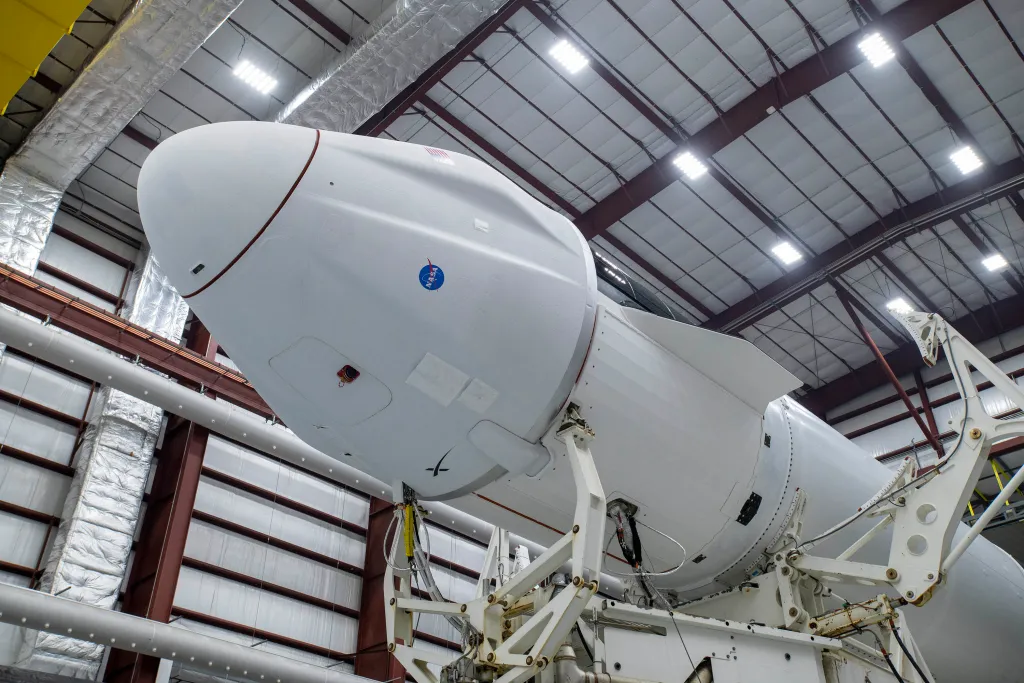
The Cargo Dragon 2 shares a similar design with the Crew Dragon spacecraft intended to carry astronauts to the ISS and back to Earth. However, there are some differences. The Cargo Dragon 2 does not have SuperDraco abort engines, nor a life support system since there will be no human passengers on board. In the pressurized section, the seats and crew displays have been swapped for cargo racks. The environmental control system has been also reduced both in size and complexity.
Overall, the CRS-28 mission’s success criteria will be successful deployment of the Cargo Dragon 2 to the dedicated orbit, its docking to the ISS, and recovery of the booster.
CRS-28 Countdown
All times are approximate
| HR/MIN/SEC | EVENT |
|---|---|
| 00:38:00 | SpaceX Launch Director verifies go for propellant load |
| 00:35:00 | RP-1 (rocket grade kerosene) loading begins |
| 00:35:00 | 1st stage LOX (liquid oxygen) loading begins |
| 00:16:00 | 2nd stage LOX loading begins |
| 00:07:00 | Falcon 9 begins pre-launch engine chill |
| 00:05:00 | Dragon transitions to internal power |
| 00:01:00 | Command flight computer to begin final prelaunch checks |
| 00:01:00 | Propellant tanks pressurize for flight |
| 00:00:45 | SpaceX Launch Director verifies go for launch |
| 00:00:03 | Engine controller commands engine ignition sequence to start |
| 00:00:00 | Falcon 9 liftoff |
LAUNCH, LANDING, AND DEPLOYMENT
All times are approximate
| HR/MIN/SEC | EVENT |
|---|---|
| 00:01:12 | Max Q (moment of peak mechanical stress on the rocket) |
| 00:02:27 | 1st stage main engine cutoff (MECO) |
| 00:02:30 | 1st and 2nd stages separate |
| 00:02:38 | 2nd stage engine starts |
| 00:02:42 | 1st stage boostback burn begins |
| 00:03:15 | 1st stage boostback burn complete |
| 00:05:45 | 1st stage entry burn begins |
| 00:05:59 | 2nd stage engine cutoff (SECO-1) |
| 00:07:06 | 1st stage landing burn begins |
| 00:07:33 | 1st stage landing |
| 00:08:37 | Dragon separates from 2nd stage |
| 00:11:49 | Dragon nosecone open sequence begins |





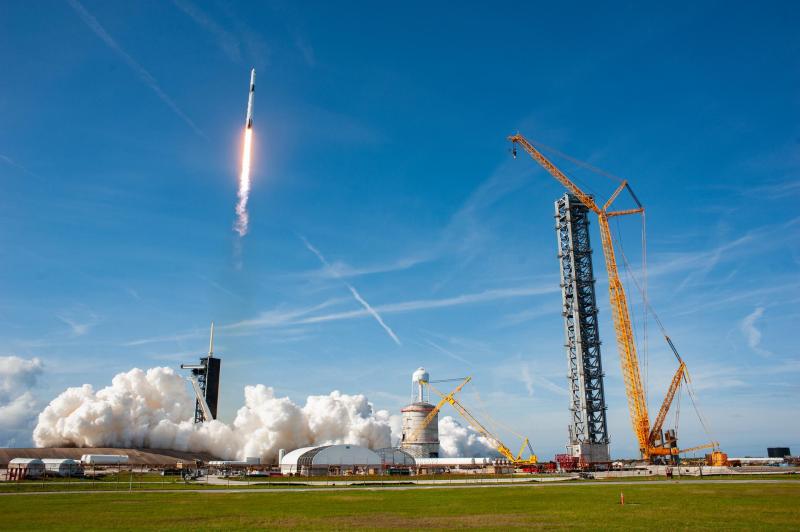
CLINGERS, Compliant Low Profile Independent Non-protruding Genderless Electronics Rendezvous System
On today’s launch of the Falcon-9 ISS resupply mission, I noticed that the first stage Mvac nozzel was shortened a few feet. Why was this done?